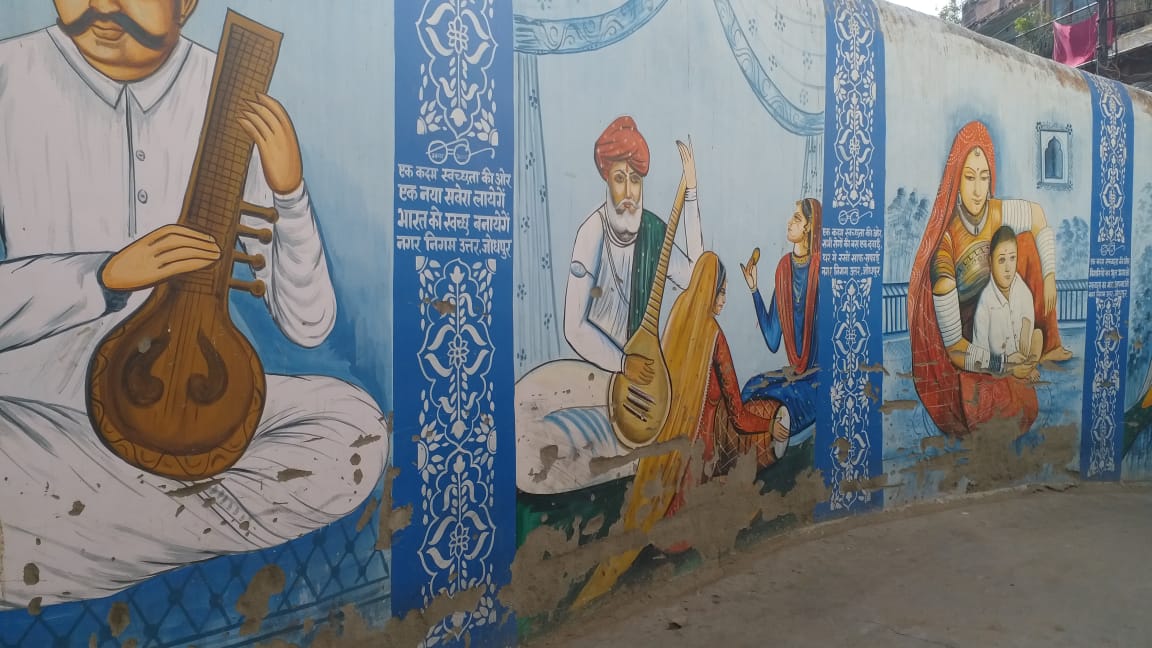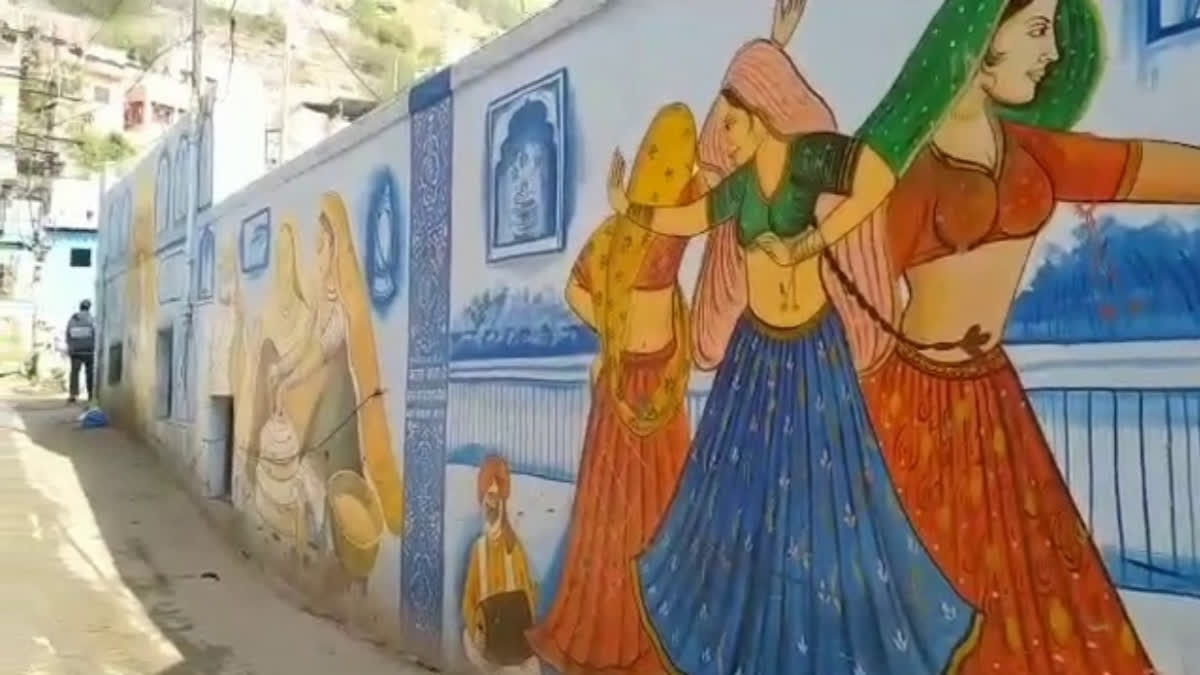Jodhpur: Known as both the Blue City and the Sun City, Jodhpur’s unique identity stems from the striking blue-painted houses of its historic Brahmapuri area. This tradition, once widespread, has diminished over time, but efforts are underway to restore the blue hues that once blanketed the city’s inner neighbourhoods. The vibrant transformation of the streets stretching from City Police to Pachetia Hill is already making this area a renewed attraction for tourists.
With support from the Municipal Corporation, Regional Councilor Dheeraj Chauhan has also commissioned colorful murals and paintings celebrating Rajasthani culture along these blue-painted streets, creating an immersive experience for visitors. “We wanted to preserve and showcase our culture while beautifying our city,” Chauhan said. “Tourists are captivated by these walls, and many stop to take photos or selfies at the new decorative points.”
A Sight to Behold: Blue Streets and Rajasthani Culture
For those walking these streets, the visual experience is immersive. The new blue paint mingles with artistic murals depicting Rajasthani traditions, making the area even more memorable. Tourists are drawn not only by the blue color but by the cultural artwork, which reflects the city’s heritage. Empty street corners have also been given new life, with installations and selfie points earmarked to engage visitors.
How to Visit the Blue City Streets
Most tourists who visit Jodhpur explore the historic stepwells, known as “bawris,” and often include Pachetia Hill in their itineraries. The blue area starts from Turji’s Jhalara and can be reached by auto, as cars cannot navigate the narrow lanes. Once on foot, visitors begin to feel immersed in Jodhpur’s iconic Blue City. Atop Pachetia Hill, tourists can look down over the ancient Brahmapuri settlement, with its clusters of blue houses nestled at the foothills of the majestic Mehrangarh Fort—a sight that has become particularly popular with international visitors.

Why Blue? The Origins of Jodhpur’s Color
The blue color of Jodhpur’s houses is believed to have practical and cultural roots. In the past, Jodhpur, located on the edge of the desert, faced scorching temperatures. To keep their homes cool, locals began mixing indigo with limewash to paint their walls—a practice that originated in Brahmapuri, where the Shrimali Brahmins resided. The blue color soon became a trademark of the area, and other residents adopted the tradition. Today, the restored blue color not only pays homage to this cooling technique but also enhances Jodhpur’s unique aesthetic appeal.
Another story links the blue to “Mor Thotha,” a naturally blue chemical derived from stones. This was once used to protect mud-built homes from damage caused by pests. The practice gradually spread, and even concrete houses began to adopt this distinctive blue shade, which became synonymous with Jodhpur’s architectural identity.
A Tourist’s Delight and Cultural Revival
With its fresh coat of blue and the addition of cultural artwork, Jodhpur’s Brahmapuri area has become a focal point for tourists, especially during the bustling tourist season. As Chauhan and the Municipal Corporation continue their beautification efforts, Jodhpur’s Blue City charm is once again in the spotlight, captivating both new and returning visitors.
Read More



